Showing Spotlights 41 - 48 of 319 in category All (newest first):
 Researchers report for the first time the fabrication and measurement of all-inkjet-printed, all-air-processed organic solar cells. Organic photovoltaic technologies have the potential to become a thin-film alternative to inorganic silicon photovoltaics due to their intrinsic potential for low-cost print processing from solution - high-speed and at low temperature. Organic solar cells can be integrated into building facades and windows because they are optically translucent and can be manufactured on large areas at high throughput.
Researchers report for the first time the fabrication and measurement of all-inkjet-printed, all-air-processed organic solar cells. Organic photovoltaic technologies have the potential to become a thin-film alternative to inorganic silicon photovoltaics due to their intrinsic potential for low-cost print processing from solution - high-speed and at low temperature. Organic solar cells can be integrated into building facades and windows because they are optically translucent and can be manufactured on large areas at high throughput.
Jun 16th, 2014
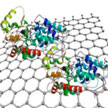 Studies have shown that in a favorable nano environment, enzyme immobilization onto nanosupports could lead to increased enzyme stability and improved specificity, and could allow for prolonged enzyme functionality through chemical and physical treatment. Researchers also have shown that immobilization onto carbon-based nanosupports can increase the enzyme turnover and allow for prolonged enzyme-based conjugates isolation and usage. In new work, researchers have now taken another step towards the detailed characterization and optimization of enzyme-nanosupport interface reactions.
Studies have shown that in a favorable nano environment, enzyme immobilization onto nanosupports could lead to increased enzyme stability and improved specificity, and could allow for prolonged enzyme functionality through chemical and physical treatment. Researchers also have shown that immobilization onto carbon-based nanosupports can increase the enzyme turnover and allow for prolonged enzyme-based conjugates isolation and usage. In new work, researchers have now taken another step towards the detailed characterization and optimization of enzyme-nanosupport interface reactions.
May 14th, 2014
 Taking the approach of flexible electronics one step further, researchers now have integrated all-carbon based electronic devices to live plants and insects. They developed an unconventional approach for the in situ synthesis of monolithically integrated electronic devices based on single-walled carbon nanotube channels and graphitic electrodes. The highly flexible transistors were formed directly by the in situ synthesis using patterned metal catalyst films and subsequently could be transferred to both planar and nonplanar substrates, including papers, clothes, and fingernails.
Taking the approach of flexible electronics one step further, researchers now have integrated all-carbon based electronic devices to live plants and insects. They developed an unconventional approach for the in situ synthesis of monolithically integrated electronic devices based on single-walled carbon nanotube channels and graphitic electrodes. The highly flexible transistors were formed directly by the in situ synthesis using patterned metal catalyst films and subsequently could be transferred to both planar and nonplanar substrates, including papers, clothes, and fingernails.
May 2nd, 2014
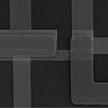 Most of the accomplishments in building carbon nanotube circuits have come at the single-nanotube level. Researchers have been struggling with two major obstacles in building CNT-based circuits: the presence of metallic CNTs and a 'perfect' alignment of nanotubes. In new work, researchers have now demonstrated the ability to fabricate, in a scalable manner, larger-scale CNFET circuits at highly scaled technology nodes. The channel lengths are ranging from 90 nm to sub-20 nm.
Most of the accomplishments in building carbon nanotube circuits have come at the single-nanotube level. Researchers have been struggling with two major obstacles in building CNT-based circuits: the presence of metallic CNTs and a 'perfect' alignment of nanotubes. In new work, researchers have now demonstrated the ability to fabricate, in a scalable manner, larger-scale CNFET circuits at highly scaled technology nodes. The channel lengths are ranging from 90 nm to sub-20 nm.
Apr 29th, 2014
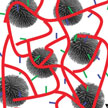 If you ever had problems with the (non-removable) battery in your iPhone or iPad then you well know that the energy storage or power source is a key component in a tightly integrated electronic device. Any damage to the power source will usually result in the breakdown of the entire device, generating at best inconvenience and cost and in the worst case a safety hazard and your latest contribution to the mountains of electronic waste. A solution to this problem might now be at hand thanks to researchers in Singapore who have successfully fabricated the first mechanically and electrically self-healing supercapacitor.
If you ever had problems with the (non-removable) battery in your iPhone or iPad then you well know that the energy storage or power source is a key component in a tightly integrated electronic device. Any damage to the power source will usually result in the breakdown of the entire device, generating at best inconvenience and cost and in the worst case a safety hazard and your latest contribution to the mountains of electronic waste. A solution to this problem might now be at hand thanks to researchers in Singapore who have successfully fabricated the first mechanically and electrically self-healing supercapacitor.
Mar 10th, 2014
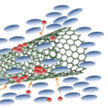 Their unique combinations of liquid and solid-like properties allow liquid crystals to be used pervasively in the electro-optical display technology - known as liquid crystal display (LCD). In new work, researchers have observed that a dilute suspension of a small amount of multi-walled carbon nanotubes in a nematic liquid crystal (in the nematic LC phase the molecules are oriented in parallel but not arranged in well-defined planes) results in a significantly faster nematic switching effect on application of an electric field.
Their unique combinations of liquid and solid-like properties allow liquid crystals to be used pervasively in the electro-optical display technology - known as liquid crystal display (LCD). In new work, researchers have observed that a dilute suspension of a small amount of multi-walled carbon nanotubes in a nematic liquid crystal (in the nematic LC phase the molecules are oriented in parallel but not arranged in well-defined planes) results in a significantly faster nematic switching effect on application of an electric field.
Dec 13th, 2013
 Friction is present in numerous physical phenomena occurring at all length scale. About 1/3 of the world's primary energy is dissipated in mechanical friction and 80% of machinery components' failure is caused by wear. Friction and wear will also become bottlenecks for micro-/nano-mechanical systems (MEMS and NEMS) featured with sliding components. Superlubricity, a phenomenon where the friction almost vanishes between two solid surfaces, will be the key to solve these problems and researchers now report a breakthrough in macroscale superlubricity.
Friction is present in numerous physical phenomena occurring at all length scale. About 1/3 of the world's primary energy is dissipated in mechanical friction and 80% of machinery components' failure is caused by wear. Friction and wear will also become bottlenecks for micro-/nano-mechanical systems (MEMS and NEMS) featured with sliding components. Superlubricity, a phenomenon where the friction almost vanishes between two solid surfaces, will be the key to solve these problems and researchers now report a breakthrough in macroscale superlubricity.
Nov 7th, 2013
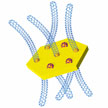 Catalysis is one of the most important routines for the production of nanomaterials. The catalysts that are used in these processes play a vital role for the controllable fabrication of nanomaterials with anticipated structures. However, carbon nanotubes grown through routine catalytic chemical vapor deposition have always shown non-carbon impurities. Effective purification of SWCNTs has therefore attracted significant attention from researchers around the world in order to improve the performance of carbon nanotubes, especially in energy storage systems.
Catalysis is one of the most important routines for the production of nanomaterials. The catalysts that are used in these processes play a vital role for the controllable fabrication of nanomaterials with anticipated structures. However, carbon nanotubes grown through routine catalytic chemical vapor deposition have always shown non-carbon impurities. Effective purification of SWCNTs has therefore attracted significant attention from researchers around the world in order to improve the performance of carbon nanotubes, especially in energy storage systems.
Oct 30th, 2013
 Researchers report for the first time the fabrication and measurement of all-inkjet-printed, all-air-processed organic solar cells. Organic photovoltaic technologies have the potential to become a thin-film alternative to inorganic silicon photovoltaics due to their intrinsic potential for low-cost print processing from solution - high-speed and at low temperature. Organic solar cells can be integrated into building facades and windows because they are optically translucent and can be manufactured on large areas at high throughput.
Researchers report for the first time the fabrication and measurement of all-inkjet-printed, all-air-processed organic solar cells. Organic photovoltaic technologies have the potential to become a thin-film alternative to inorganic silicon photovoltaics due to their intrinsic potential for low-cost print processing from solution - high-speed and at low temperature. Organic solar cells can be integrated into building facades and windows because they are optically translucent and can be manufactured on large areas at high throughput.
 Subscribe to our Nanotechnology Spotlight feed
Subscribe to our Nanotechnology Spotlight feed





